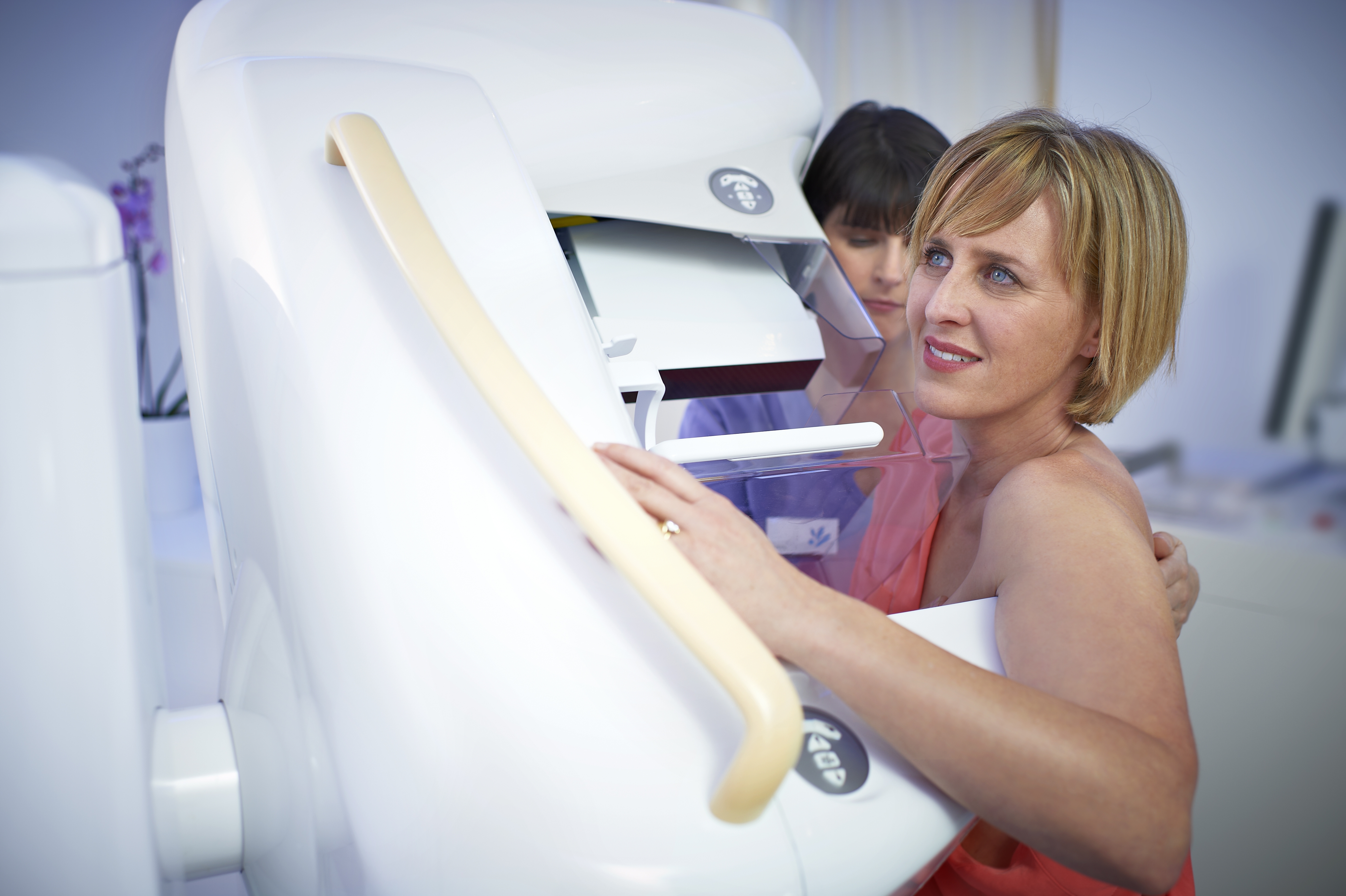
June 16, 2014 — In the last 30 years, since mammography was introduced, late-stage breast cancer incidence has decreased by 37 percent, a new study from the University of Michigan Comprehensive Cancer Center finds.
The analysis takes into account an observed underlying trend of increased breast cancer incidence present since the 1940s, a sort of inflation rate for breast cancer.
Researchers looked at early-stage and late-stage breast cancer diagnoses between 1977-1979, before mammography became popular, and compared it to diagnoses between 2007-2009. Based on trends observed in the pre-mammography period of the 1940s to the 1970s as well as continued trends over time, the researchers took into account a central estimated increase in breast cancer incidence of 1.3 percent per year. This is called an annual percentage change, or APC.
Think of the APC like the inflation rate: $1 from 1977 does not go as far in 2007. Just as the cost of money rises, the number of breast cancer diagnoses is increasing, independently of efforts to detect it earlier.
In the current paper, published in Cancer, the researchers looked at the late 1970s data and projected incidence of early-stage and late-stage breast cancer in 2007-2009 based on the APC. They then compared the projected rates to actual rates.
Late-stage breast cancer incidence decreased 37 percent from the projected rate, and early-stage breast cancer incidence correspondingly increased 48 percent from 1977-1979 to 2007-2009. They also conducted similar analyses with other APC values, ranging from 0.5 to 2 percent. All estimates showed a substantial decrease in late-stage disease.
“When you factor in this temporal trend, our analysis shows that there has been a shift from late-stage to early-stage breast cancer over the last 30 years. This is what you would expect with a successful screening program. Not only are we detecting more early-stage cancer, but we are decreasing the number of late-stage cases that tend to be more challenging to treat and more deadly,” says senior study author Mark Helvie, M.D., professor of radiology and director of breast imaging at the University of Michigan Comprehensive Cancer Center.
There are many reasons why breast cancer incidence is increasing over time, including reproductive, dietary and environmental factors. Prior estimates showed a 1 to 3 percent annual increase in the United States and Europe before mammography screening began. In countries in Africa, Asia and Eastern Europe with no routine screening mammography, breast cancer rates are increasing as much as 3 to 5 percent per year.
Importantly, the current study also found that since mammography was introduced, there has been an overall 9 percent decrease in invasive breast cancer, when factoring in a 1.3 percent annual percentage increase. This has been offset by an increase in ductal carcinoma in situ, so-called stage 0 breast cancer, which is not invasive.
“While we have seen an increase in overall breast cancer incidence over the last 30 years, the drop in late-stage diagnoses is a positive benefit of mammography and our heightened awareness of early detection. The decrease in late-stage disease, together with improved treatments, contributes to the decreased mortality from breast cancer in the United States in the last 20 years,” Helvie says.
Additional authors: Joanne T. Chang, M.P.H., and Mousumi Banerjee, Ph.D., University of Michigan; and R. Edward Hendrick, Ph.D., University of Colorado.
For more information: www.newswise.com/institutions/newsroom/868/


 April 16, 2024
April 16, 2024 








